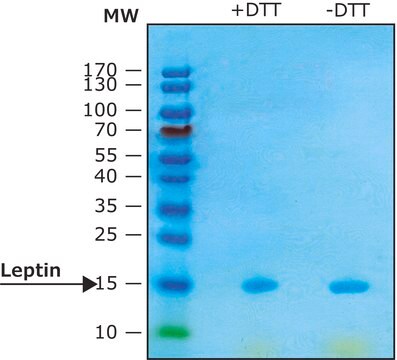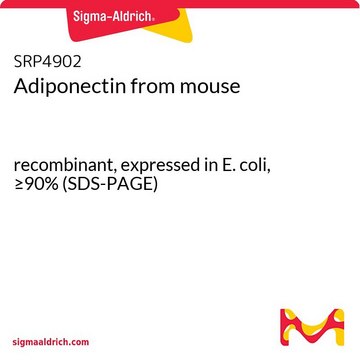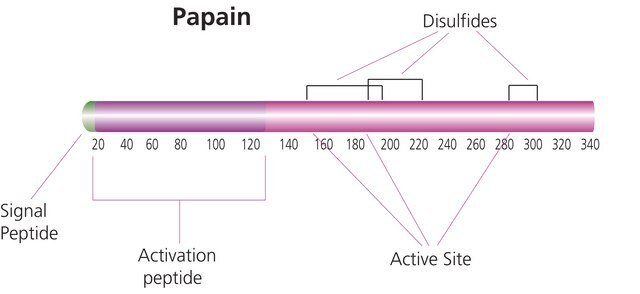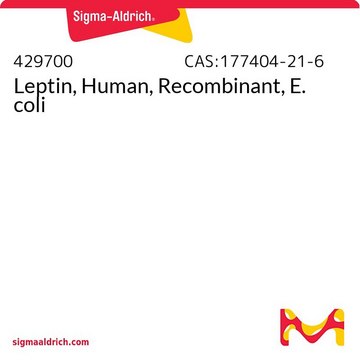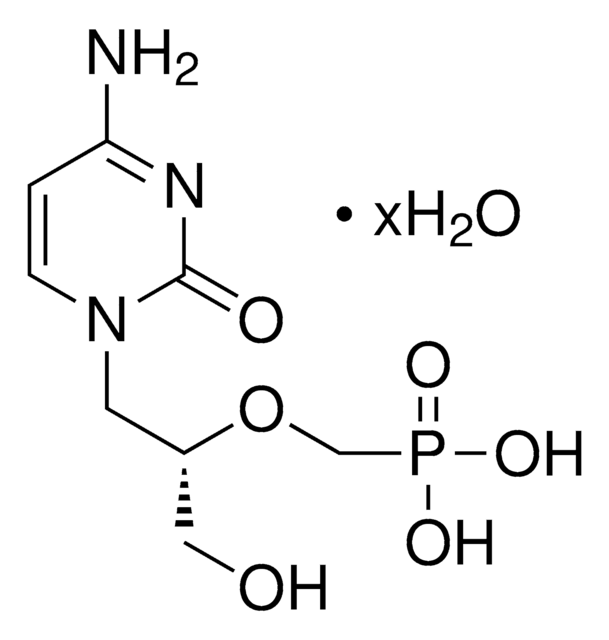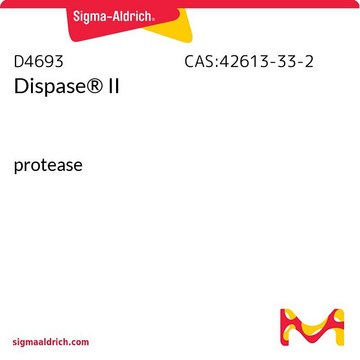SRP4901
Adiponectin human
recombinant, expressed in E. coli, ≥90% (SDS-PAGE)
Synonym(s):
ACDC, APM-1, Acrp30, AdipoQ, GBP-28
Sign Into View Organizational & Contract Pricing
All Photos(1)
About This Item
UNSPSC Code:
12352202
Recommended Products
biological source
human
recombinant
expressed in E. coli
Assay
≥90% (SDS-PAGE)
form
lyophilized
mol wt
~30 kDa
packaging
pkg of 25 μg
storage condition
avoid repeated freeze/thaw cycles
impurities
endotoxin, tested
NCBI accession no.
UniProt accession no.
shipped in
wet ice
storage temp.
−20°C
Gene Information
human ... ADIPOQ(9370)
General description
Adiponectin (also called Acrp30, AdipoQ) is an adipocyte specific secreted protein that circulates in the plasma. It is induced during adipocyte differentiation and its secretion is stimulated by insulin. The protein has a carboxyl-terminal globular domain and an amino-terminal collagen domain. The gene is mapped to human chromosome 3q27. Human adiponectin shares about 83% amino acid identity with that of mouse and about 90% with that of rat.
Application
Adiponectin human has been used to study the effect of adiponectin on androstenedione secretion and oxidative stress in rodent model.
Biochem/physiol Actions
Adiponectin (also called Acrp30, AdipoQ) has antiatherosclerotic and anti-inflammatory properties. It plays a role in various physiological processes such as energy homeostasis and obesity. Plasma levels of adiponectin are reduced in obese humans, and decreased levels are associated with insulin resistance and hyperinsulinemia. It exhibits antidiabetic action by interacting with adiponectin receptors, AdipoR1 and AdipoR2. Low levels of adiponectin are also linked with hypertension and dyslipidemia. Mutation in the gene at position 276G is linked with risk for endometrial cancer.
Physical form
Lyophilized from a 0.2 μm filtered solution in 25 mM Tris, 0.15 M NaCl, pH 7.4 containing 50 μg of bovine serum albumin (BSA) per 1 μg of adiponectin.
Reconstitution
Centrifuge the vial prior to opening. Avoid freeze-thaw cycles.
Recontitute in PBS containing at least 0.1% BSA to a concentration of 0.1-1.0 mg/mL. This stock solution can then be diluted into other aqueous buffers and stored at 4°C for 1 week or –20°C for future use.
Analysis Note
Activity of human recombinant adiponectin is measured by its ability to inhibit proliferation of mouse myeloid cell line M1. The ED50 for the effect is typically 1-7 μg/ml.
Storage Class Code
11 - Combustible Solids
WGK
WGK 3
Flash Point(F)
Not applicable
Flash Point(C)
Not applicable
Choose from one of the most recent versions:
Certificates of Analysis (COA)
Lot/Batch Number
Don't see the Right Version?
If you require a particular version, you can look up a specific certificate by the Lot or Batch number.
Already Own This Product?
Find documentation for the products that you have recently purchased in the Document Library.
Customers Also Viewed
Genetic architecture of the APM1 gene and its influence on adiponectin plasma levels and parameters of the metabolic syndrome in 1,727 healthy Caucasians.
Heid IM
Diabetes, 55, 375-384 (2006)
Adiponectin attenuates Ang ?-induced TGF?1 production in human mesangial cells via an AMPK-dependent pathway.
Tan M
Biotechnology and Applied Biochemistry, 62, 848-854 (2015)
Association Between Single Nucleotide Polymorphism +276G > T (rs1501299) in ADIPOQ and Endometrial Cancer.
Bienkiewicz J
Pathology Oncology Research, 22, 135-138 (2016)
Adiponectin and adiponectin receptors in insulin resistance, diabetes, and the metabolic syndrome.
Kadowaki T
The Journal of Clinical Investigation, 116, 1784-1792 (2006)
Mehroz Ehsan et al.
Atherosclerosis, 245, 1-11 (2015-12-22)
Monocyte-derived microparticles (mono-MPs) are emerging as critical transducers of inflammatory signals, and have been suggested to link cardiovascular risk factors to vascular injury. Since adiponectin has been proposed to exert multiple anti-inflammatory and vasculoprotective effects, we hypothesized that it might
Articles
Lipid Induced Insulin Resistance
Our team of scientists has experience in all areas of research including Life Science, Material Science, Chemical Synthesis, Chromatography, Analytical and many others.
Contact Technical Service